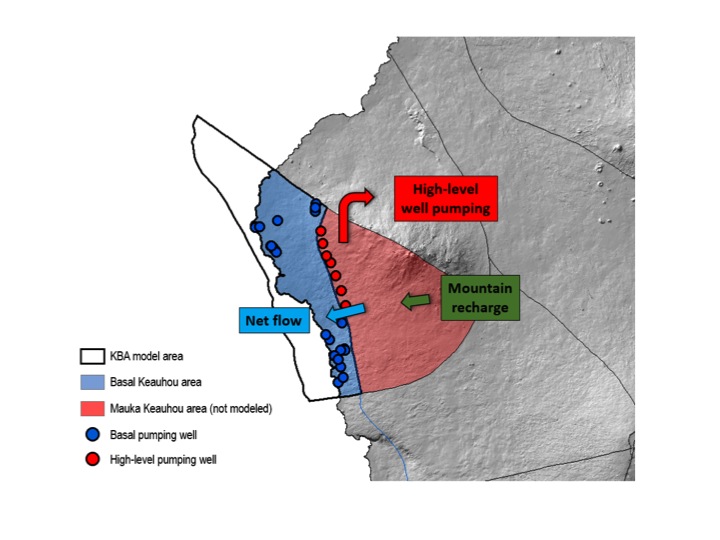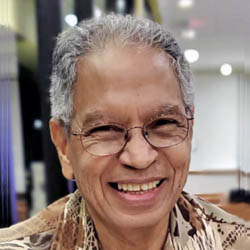
SPONSOR:
National Science Foundation – EPSCoR’s ‘Ike Wai
PROJECT PERIOD:
10/2017 – 05/2021
PROJECT PIs:
Gwen Jacobs and Aly El-Kadi (Senior Researcher)
ABSTRACT:
Hydrogeology of West Hawai‘i is complex. Aquifers are composed of basalts, geologic barriers, and volcanic rift zones containing intersecting low-permeability vertical dikes. In some locations, low conductivity zones act as barriers to flow through layered basalts. The dispersion process is not well understood in fractured basalts. Topography and the deep nature of aquifer systems are prohibitive factors in completing field investigations island wide through well drilling. Aquifers are physically connected and inter-aquifer flows are not defined. To better constrain parameters and reduce uncertainties, calibration efforts in this study were utilizing all available data, including independent conductivity measurements, hydraulic head, submarine groundwater discharge, and concentrations of various species. This study included developing and implementing a conceptual model for the study site, calibrating the model using available data to their fullest extent to constrain parameters, and applying the model for management of onsite disposal systems through simulating various scenarios aimed at assessing the risk to aquatic resources. The modeling efforts improve our understanding of aquifer water flow and storage aquifer help, and also guide the efforts to develop management strategies securing water resources’ sustainability.
PRINCIPAL INVESTIGATOR
